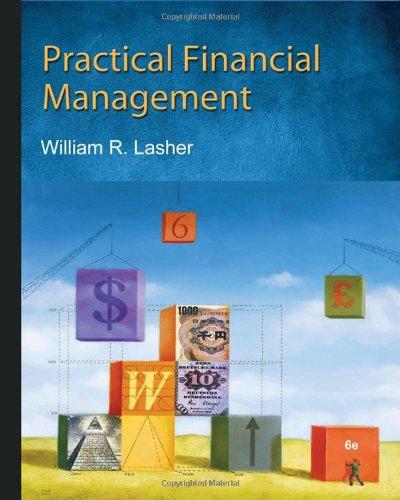Answered step by step
Verified Expert Solution
Question
1 Approved Answer
Please assist with the following attachment, as soon as possible. Module 4 Assignment: The questions below relate to the readings and Module lectures. Please type
Please assist with the following attachment, as soon as possible.
 Module 4 Assignment: The questions below relate to the readings and Module lectures. Please type all short answer responses. Responses to questions requiring calculations should be typed or neatly handwritten. 1. 2. 3. 4. What is the key difference between speculation and gambling? Is investing in the equity market a gamble? Is it a fair game? What does it mean for investors to have heterogeneous expectations? In theory, currencies should not have a positive risk premium over one another otherwise market participants would want to buy securities denominated in the currency that has a positive risk premium and sell securities denominated in currencies with a negative risk premium. If currencies have a zero risk premium, explain using the concept of heterogeneous expectations how currency trading is speculation rather than gambling. 5. Assume two investors A & B have essentially the same belief that US stocks are trading at fair value - meaning they expect to earn the historical risk premium over the next 5-10 years. Use utility theory to explain why investor A might sell his holding in an ETF that tracks the S&P 500, while investor B might buy it. 6. A risky portfolio has and expected return of 12% and std deviation of 18%. T-Bills offer a risk free return of 7%. What is the maximum level of risk aversion for which the risky portfolio is still preferred to T-Bills? 7. Fill in the table below for the indifference curve that corresponds to a Utility = 0.05 and an investor risk aversions of A=3 and A=4. Standard deviation 0.0 0.05 0.10 0.15 0.20 0.25 8. E (r) (A=3) E (r) (A=4) The table below shows four investments of varying risk and return. If your risk aversion coefficient A = 4, which investment would you select and why? Investment 1 2 3 4 9. Variance E(r) .12 .15 .21 .24 Std Deviation .3 .5 .16 .21 Utility for (A=4) If the investor were risk neutral A=0, which investment would he select and why? 10. You have a chance to play a coin flip game where if the coin comes up heads you get $5,000; but lose $1,000 if it comes up tails. If you are risk averse (A.>0), how much would you need to be paid to walk away and not play the game? Explain
Module 4 Assignment: The questions below relate to the readings and Module lectures. Please type all short answer responses. Responses to questions requiring calculations should be typed or neatly handwritten. 1. 2. 3. 4. What is the key difference between speculation and gambling? Is investing in the equity market a gamble? Is it a fair game? What does it mean for investors to have heterogeneous expectations? In theory, currencies should not have a positive risk premium over one another otherwise market participants would want to buy securities denominated in the currency that has a positive risk premium and sell securities denominated in currencies with a negative risk premium. If currencies have a zero risk premium, explain using the concept of heterogeneous expectations how currency trading is speculation rather than gambling. 5. Assume two investors A & B have essentially the same belief that US stocks are trading at fair value - meaning they expect to earn the historical risk premium over the next 5-10 years. Use utility theory to explain why investor A might sell his holding in an ETF that tracks the S&P 500, while investor B might buy it. 6. A risky portfolio has and expected return of 12% and std deviation of 18%. T-Bills offer a risk free return of 7%. What is the maximum level of risk aversion for which the risky portfolio is still preferred to T-Bills? 7. Fill in the table below for the indifference curve that corresponds to a Utility = 0.05 and an investor risk aversions of A=3 and A=4. Standard deviation 0.0 0.05 0.10 0.15 0.20 0.25 8. E (r) (A=3) E (r) (A=4) The table below shows four investments of varying risk and return. If your risk aversion coefficient A = 4, which investment would you select and why? Investment 1 2 3 4 9. Variance E(r) .12 .15 .21 .24 Std Deviation .3 .5 .16 .21 Utility for (A=4) If the investor were risk neutral A=0, which investment would he select and why? 10. You have a chance to play a coin flip game where if the coin comes up heads you get $5,000; but lose $1,000 if it comes up tails. If you are risk averse (A.>0), how much would you need to be paid to walk away and not play the game? Explain Step by Step Solution
There are 3 Steps involved in it
Step: 1

Get Instant Access to Expert-Tailored Solutions
See step-by-step solutions with expert insights and AI powered tools for academic success
Step: 2

Step: 3

Ace Your Homework with AI
Get the answers you need in no time with our AI-driven, step-by-step assistance
Get Started


